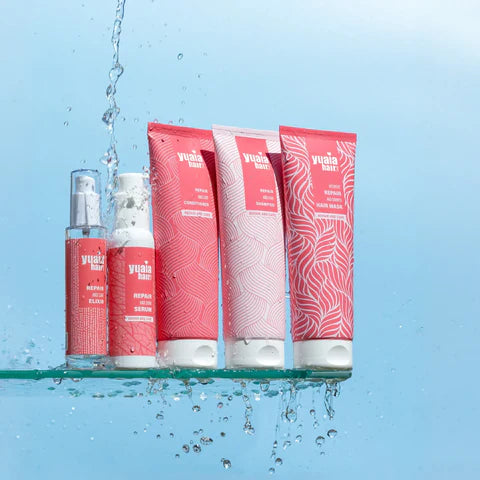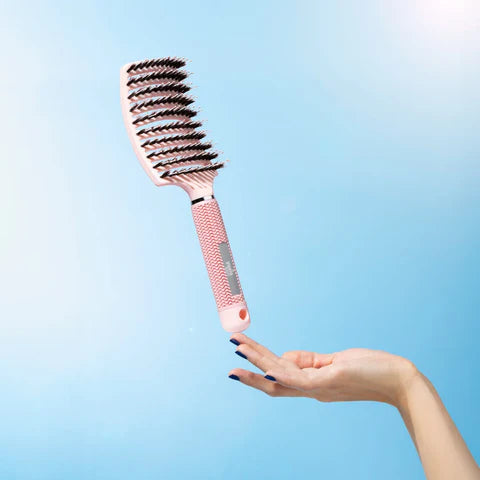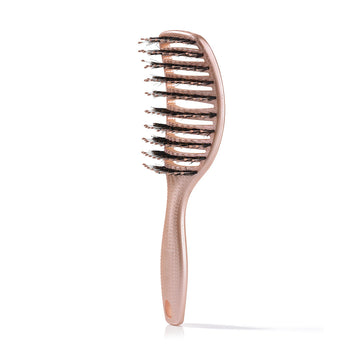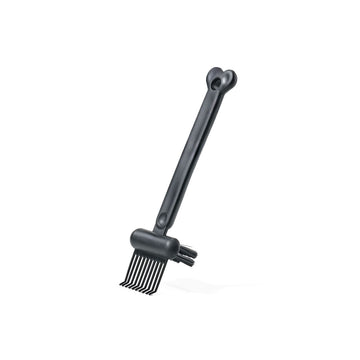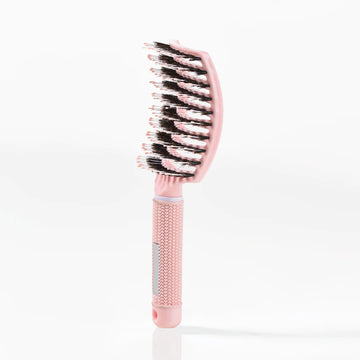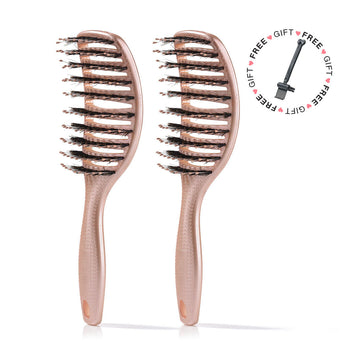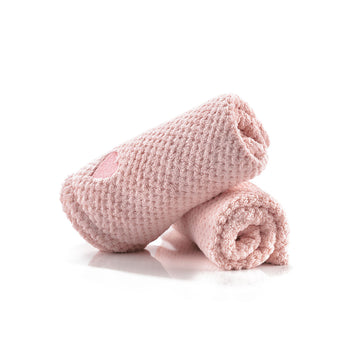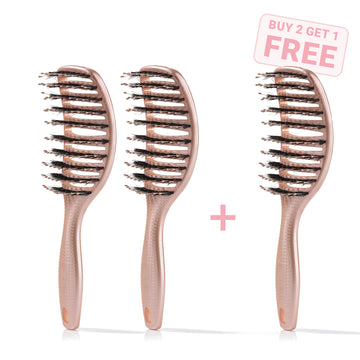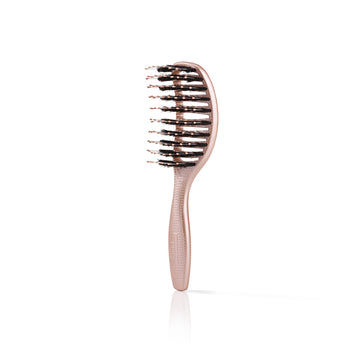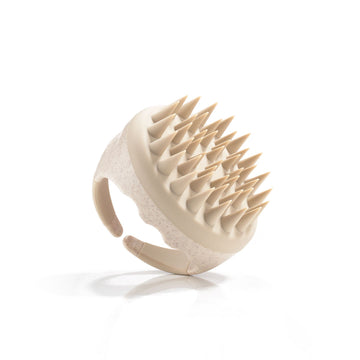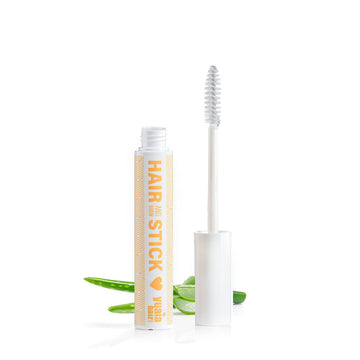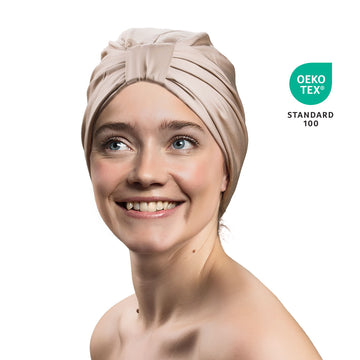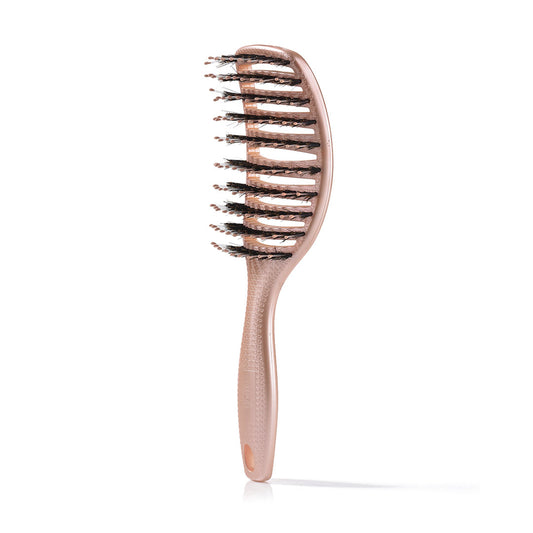
What causes a cowlick?
Cowlicks occur due to the unique orientation of hair follicles in the scalp. These follicles grow in a spiral or opposing direction compared to the surrounding hair, causing certain sections to stand up, change direction, or resist styling altogether. This natural growth pattern is established genetically, meaning cowlicks are typically present from a young age and remain consistent over time.
Hair texture further influences the visibility and behavior of a cowlick. Coarse or thick hair often accentuates the unruly pattern, making the cowlick more prominent, while fine or straight hair may appear smoother but still resist laying flat. Environmental factors like humidity and hair length can also affect how noticeable a cowlick is on a given day.
Depending on its placement—commonly at the crown, hairline, or nape—a cowlick can disrupt specific hairstyles more than others, necessitating thoughtful cutting and styling techniques to work with, rather than against, its direction.
Techniques for managing cowlicks
Effectively managing cowlicks requires a combination of technique, styling tools, and the right haircut. In the following sections, we explore proven methods that can help you regain control over stubborn hair growth patterns.
Blow-drying methods
One of the most effective ways to manage a cowlick is by training it immediately after washing your hair, as this is when the hair is most pliable and responsive to styling efforts.
Begin by towel-drying gently to remove excess moisture, then section the area where the cowlick is most prominent. While the hair is still damp, use a blow dryer with a nozzle attachment to focus the airflow directly against the natural growth pattern. Apply heat in short, controlled bursts while using your other hand or a styling brush to hold the hair in the opposite direction.
This consistent opposition helps to reset the hair's memory and encourages a smoother lay. A round brush can be particularly effective in this step, as it allows you to pull the hair taut while simultaneously smoothing it down, adding volume and guiding the strands into the desired position. Repeating this technique regularly as part of your routine can significantly improve manageability over time.
Styling products
Products like pomades, waxes, and strong-hold gels can offer significant control and weight, making them highly effective for keeping cowlicks in place throughout the day, especially in humid or windy conditions. These styling aids work by adding structure and helping hair conform to a desired direction, reducing the appearance of unruliness.
For those seeking a more natural look or who prefer a lighter touch, lightweight mousses or styling creams are excellent alternatives. These products add subtle hold and shape without stiffness, which can be ideal for everyday use.
Applying any of these products while the hair is still damp ensures they bond better with the strands. Additionally, using heat from a blow dryer after application can enhance the setting process, locking the hair into place more effectively and ensuring longer-lasting results throughout the day.
Haircuts and styles
Choosing the right haircut can help minimize the visibility of cowlicks. The structure and styling technique play a crucial role in either highlighting or disguising them.
Short haircuts
Short hairstyles are particularly effective for managing cowlicks, as the reduced length limits the hair’s ability to stand out or resist styling. Buzz cuts virtually gets rid of the appearance of cowlicks altogether, while pixie cuts and close-cropped styles allow for precise shaping and easy blending of problem areas.
These haircuts give stylists greater control and flexibility to work with the natural growth pattern, often making cowlicks barely noticeable. With the right technique, a short cut can neutralize the uneven texture and direction caused by cowlicks, resulting in a cleaner, more uniform look that requires less maintenance.
Longer styles
Longer hairstyles can also be an effective way to manage cowlicks, as the added weight helps to naturally press down stubborn sections. This weight reduces the hair’s tendency to spring up or defy styling.
Strategic layering can further enhance control by redistributing volume in a way that blends the cowlick into the surrounding hair. Feathered ends soften transitions and help mask irregular growth patterns, particularly around the crown or hairline. While longer hair may require more daily styling effort, it offers versatility and can work well with a cowlick when shaped thoughtfully.
Styling tricks to get rid of cowlicks
Styling techniques can play a key role in minimizing the appearance of cowlicks. Switching to a side part is a simple yet effective way to redirect the eye and reduce focus on uneven areas.
Textured cuts add movement and irregularity by design, making cowlicks less noticeable within the overall style. Fringe styles, particularly those with soft or wispy ends, can help mask cowlicks at the hairline by blending them into the rest of the hair. Using heat tools, styling products, or blow-drying in the opposite direction can also help train the hair over time.
Training hair
With consistent styling over time, it is sometimes possible to "train" hair to lie in a different direction, gradually encouraging a more manageable growth pattern. This process requires a deliberate and consistent approach, with the hair being regularly combed into the desired direction—ideally while it is still damp and receptive to shaping.
Applying a bit of styling product, such as a lightweight gel or smoothing cream, helps reinforce the new direction by providing hold and structure. Follow this by using a blow dryer on a medium heat setting to set the position. Incorporating a brush or comb during drying adds precision and ensures better alignment.
Over several weeks, the repeated action may help reduce the cowlick’s resistance, though the extent of change can vary depending on hair type and natural follicle orientation. While not a guaranteed fix, it often results in noticeable improvement in how the hair behaves, making everyday styling easier and more predictable.
Frequently asked questions about cowlicks
Can cowlicks be permanently removed?
No, since cowlicks are rooted in the natural orientation of hair follicles beneath the scalp, they cannot be permanently removed or altered without medical or surgical intervention, which is rarely considered or recommended for such a cosmetic issue. However, they can be effectively managed with consistent styling methods that work to minimize their appearance. While these efforts do not get completely rid of the cowlick, they significantly reduce its impact on hair appearance.
Are cowlicks a sign of balding?
Not necessarily. While cowlicks may become more noticeable with thinning hair due to reduced overall volume and coverage, they are not inherently linked to the biological process of hair loss. The presence of a cowlick is generally determined by the orientation of hair follicles and not by the health or density of the hair itself.
In cases of thinning, the contrast between the cowlick and surrounding areas may become more pronounced, which can lead to the misconception that cowlicks signal balding. However, people with full and healthy hair can also have prominent cowlicks. It is important to distinguish between natural hair growth patterns and medical conditions that lead to hair loss to avoid unnecessary concern.
Do certain hair types experience more prominent cowlicks?
Yes, thick hair, coarse hair, or curly hair can make cowlicks appear more pronounced due to the added volume, density, and natural resistance to manipulation that these textures often have. The hair tends to spring back into its natural pattern more forcefully, making it harder to redirect or flatten.
In contrast, fine or straight hair may lie flatter and be somewhat easier to style, but it can still be prone to resistance, especially if the cowlick is strong or the hair lacks sufficient weight to hold a new shape. Furthermore, even with straight hair, cowlicks can disrupt clean partings and create irregular contours, particularly in areas like the hairline or crown.
Making peace with cowlicks
Cowlicks are a common hair feature, but they don't have to define your hairstyle. With the right approach and consistent care, they can be managed effectively. By using suitable products, proper techniques, and making thoughtful styling choices, you can minimize their impact. Whether you embrace or tame them, you have options to maintain your desired look.

 2-5 day delivery
2-5 day delivery
 25.000+ satisfied customers
25.000+ satisfied customers
 Satisfaction Guarantee
Satisfaction Guarantee





